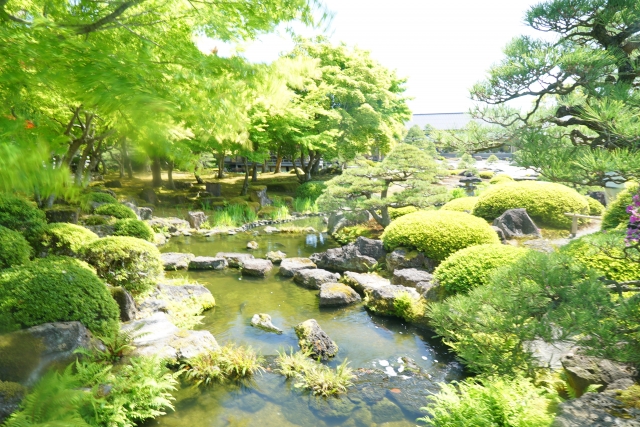Japanese gardens are representative of a traditional culture that has developed uniquely in Japan over the ages. Japanese gardens are places for relaxation and appreciation of beautiful scenery created arbitrarily from natural landscapes.
In Japanese gardens, places of auspiciousness can be found throughout the garden. They reflect the wish of the Japanese people since ancient times to remove anxiety from their future lives by keeping auspicious objects close at hand.
Let me explain why Japanese gardens are auspicious.
Cranes live for 1000 years, turtles live for 10,000 years
Crane for a thousand years, turtle for ten thousand years is an auspicious saying in Japan, meaning longevity and happiness.
In Japanese gardens, islands are created in the image of cranes and turtles to signify longevity in the garden and to wish for longevity. Most often, cranes and turtles are created as a set and called a crane island or a turtle island.
The islands are not always located in a pond, but in the case of karesansui (dry landscape garden), the islands are created in a gravel area that resembles a pond.
The island in the photo at Kochiin is an island with a crane flying with its long neck straight out to the right and a tortoise with its head and legs out to the left.

Boat to Treasure Island
The legendary Horai Island in China is said to be an island made of gold, silver, and treasures where immortals make elixirs of immortality.
In the Japanese garden, you can see the Horai Island and a boateki, meaning a boat, which was used to go to the island.
The boating stone on the right side of the photo is the boating stone of Renge-ji Temple. Since the bow of the boat is bowed up toward the return trip, it is called Irifune, meaning a boat loaded with gold, silver, and temple treasures at Horai Island. On the other hand, if the bow of the boat is heading to Horai Island, it is called “out-bune”.

Auspicious Seven-Five-Three
Shichi-Go-San(Seven-Five-Three) is a Chinese culture of ceremonies to pray for the longevity of children, which is considered an auspicious number in China, and is also practiced in Japan.
In Japanese gardens, stones are often placed in connection with the Seven-Five-Three Festival.
The shape varies, but if you look closely, you can find many Shichi-Go-San(Seven-Five-Three) arrangements.
The photo shows a stone arrangement reusing the foundation stone of Tofukuji Temple, which also has the auspicious number seven.

Such auspicious designs can be seen everywhere in Japanese gardens. This is why Japanese gardens are so popular for their good omens.
Japanese gardens are not only designed for their natural beauty, but are also created with deep meaning and intention. The garden designer puts his or her best effort into creating a garden design that will realize the wishes and aspirations of the client.
By deciphering the meanings of Japanese gardens and combining them with the historical background of the time when the gardens were created, we can understand the depth of Japanese gardens.


